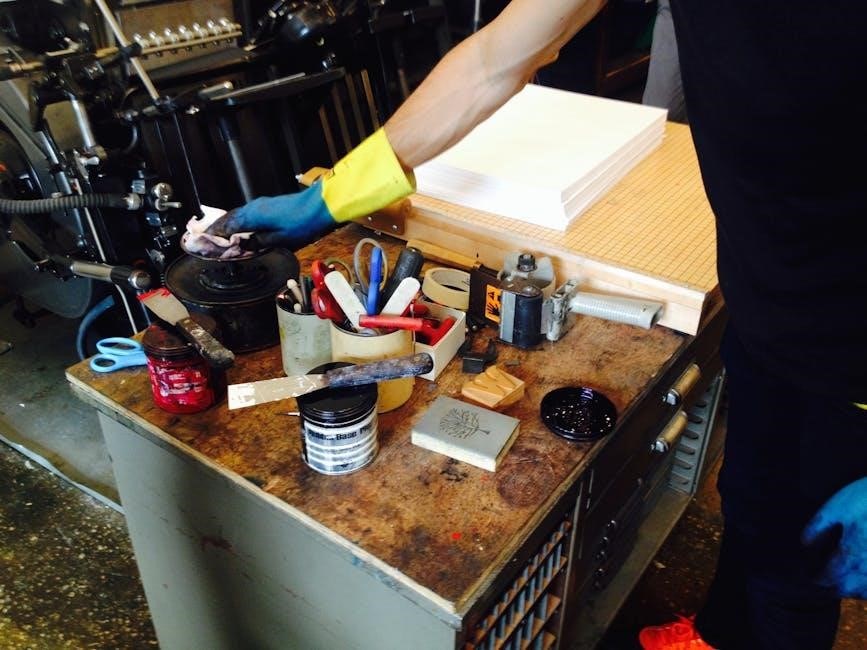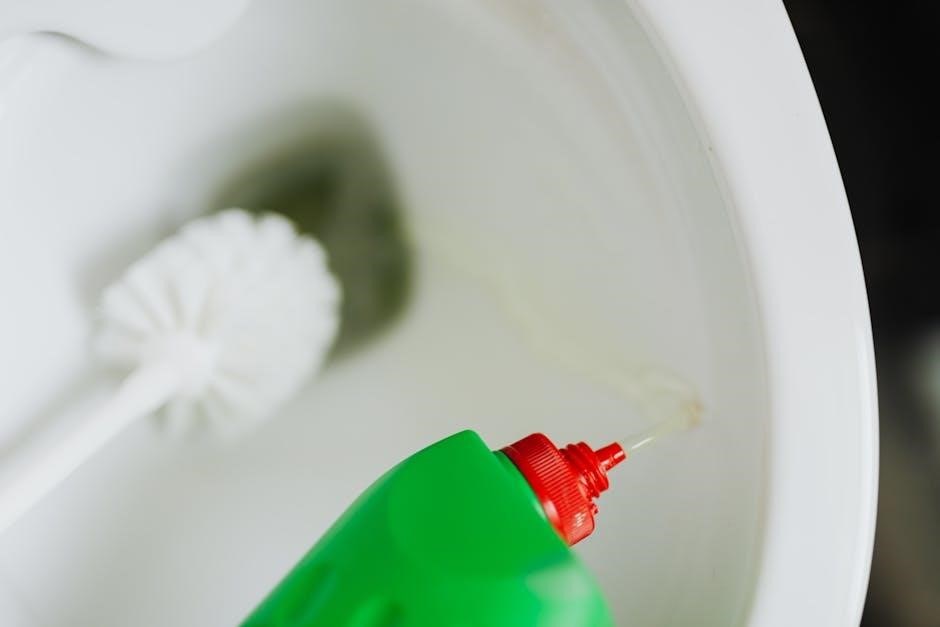onan 5500 generator service manual pdf
The Onan 5500 Generator Service Manual is an essential resource for owners and technicians, providing detailed guidance on operation, maintenance, and repair. It ensures safe and efficient use of the generator, covering troubleshooting, diagnostic procedures, and replacement parts. This comprehensive guide is designed to help users maximize performance and extend the lifespan of their Onan 5500 generator.
1.1 Overview of the Onan 5500 Generator
The Onan 5500 Generator is a reliable power solution designed for RVs and other applications, offering 5500 watts of power at 60 Hz and 120 volts. It operates on gasoline, ensuring efficient energy delivery. Known for its durability and portability, this generator is ideal for recreational and emergency power needs. The service manual provides essential insights into its operation, maintenance, and troubleshooting, making it a vital resource for owners and technicians.
1.2 Importance of the Service Manual
The Onan 5500 Generator Service Manual is crucial for ensuring safe and effective operation, maintenance, and repair. It provides detailed instructions, safety guidelines, and troubleshooting tips, helping users avoid potential hazards; The manual also includes specifications, diagrams, and part information, making it an indispensable resource for maximizing performance and extending the generator’s lifespan. Regular reference to this guide ensures optimal functionality and compliance with manufacturer recommendations.
1.3 Structure and Content of the Manual
The Onan 5500 Generator Service Manual is organized into clear sections for easy navigation. It begins with an introduction, followed by technical specifications, safety precautions, and maintenance schedules. Detailed diagrams, troubleshooting guides, and repair procedures are included, along with information on genuine parts and warranty support. The manual concludes with FAQs and best practices, ensuring comprehensive coverage for all aspects of generator ownership and maintenance.

Key Features and Specifications of the Onan 5500 Generator
The Onan 5500 Generator delivers 5500 watts of power, operating at 60 Hz and 120 volts. It is gas-powered, designed for reliability and efficient performance in various applications.
2.1 Technical Specifications
The Onan 5500 Generator operates at 60 Hz and 120 volts, producing 5500 watts of power. It is gas-powered, with models like HDKAH (Spec A-P) and HDKAK (Spec A-C) available. Designed for reliability, it features a robust engine and durable construction, suitable for RV and similar applications. The generator is engineered to meet high performance standards, ensuring consistent power delivery in various operating conditions.

2.2 Fuel Type and Efficiency
The Onan 5500 Generator runs on gasoline, ensuring reliable performance for RV and similar applications. It is designed for efficient fuel consumption, delivering consistent power output. Models like HDKAH (Spec A-P) and HDKAK (Spec A-C) are optimized for fuel efficiency, making them suitable for extended use. Proper fuel management, as outlined in the manual, helps maintain optimal performance and reduces operational costs over time.
2.3 Power Output and Voltage
The Onan 5500 Generator delivers a maximum power output of 5,500 watts, with a standard voltage of 120 volts. It operates at a frequency of 60 Hz, ensuring compatibility with most electrical systems. This configuration supports a wide range of applications, from RVs to emergency power needs. The generator’s voltage regulation system provides stable power, safeguarding connected equipment and enhancing overall performance.

Safety Precautions and Warnings
Always follow safety guidelines to prevent accidents. Keep hands away from moving parts, disconnect spark plugs before servicing, and use proper PPE. Adhere to hazard symbols and warnings to ensure safe operation and maintenance of the Onan 5500 Generator.
3.1 General Safety Guidelines
Always follow safety precautions to avoid accidents. Disconnect the spark plug wire and negative battery cable before servicing. Wear proper personal protective equipment (PPE) like gloves and safety glasses. Keep loose clothing and jewelry away from moving parts. Ensure good ventilation to prevent carbon monoxide buildup. Never service the generator while it is running or hot. Understand and adhere to all hazard symbols and warnings provided in the manual for safe operation and maintenance.
3.2 Hazard Symbols and Their Meanings
The manual uses specific hazard symbols to alert users of potential dangers. The DANGER symbol indicates immediate hazards that could cause serious injury or death. WARNING signifies potential hazards that may result in injury or damage. CAUTION highlights less severe risks, such as damage to equipment. Understanding these symbols is crucial for safe operation and maintenance of the Onan 5500 generator.
3.3 Personal Protective Equipment (PPE)
Personal Protective Equipment (PPE) is crucial for safe servicing of the Onan 5500 generator. Essential items include gloves to prevent cuts and abrasions, safety glasses to protect eyes from debris, and steel-toe boots for foot protection. Proper PPE ensures compliance with safety standards and prevents injuries during maintenance tasks, such as handling hot components or working with electrical systems.

Maintenance Schedule and Procedures
The Onan 5500 Generator requires regular maintenance to ensure optimal performance. Routine tasks include oil and filter changes, spark plug inspections, and air filter cleaning. Adhering to the recommended schedule guarantees reliability and extends the generator’s lifespan.
4.1 Routine Maintenance Tasks
Regular maintenance ensures the Onan 5500 Generator operates efficiently. Key tasks include oil changes every 50 hours, air filter cleaning, and spark plug inspections. Checking the fuel system, battery terminals, and belts is also crucial. Using genuine Onan replacement parts guarantees optimal performance. Always refer to the manual for specific intervals and procedures to maintain reliability and extend the generator’s lifespan. Proper upkeep prevents unexpected failures and ensures safe operation.
4.2 Oil and Filter Replacement
Regular oil and filter changes are vital for the Onan 5500 Generator’s longevity. Use high-quality oil meeting Onan specifications and replace the filter every 50 hours. Drain the oil carefully, ensuring no spills. Install a new oil filter by hand tightening. Refer to the manual for torque specifications and recommended oil viscosity. Proper replacement prevents engine damage and maintains optimal performance, adhering to the service schedule outlined in the manual.
4.3 Spark Plug and Air Filter Maintenance
Regular maintenance of spark plugs and air filters is crucial for the Onan 5500 Generator’s performance. Inspect spark plugs every 100 hours and replace them as needed. Clean or replace the air filter every 50 hours, or more frequently in dusty conditions. Ensure proper torque when installing spark plugs and use genuine Onan parts for reliability. Refer to the manual for detailed procedures to maintain optimal engine function and efficiency.

Troubleshooting Common Issues
This section addresses common problems with the Onan 5500 Generator, such as no power output, overload issues, or sensor faults. It provides diagnostic steps and solutions to restore functionality efficiently.
5.1 Identifying Common Problems
The Onan 5500 Generator may experience issues such as no power output, overload, or sensor malfunctions. These problems often stem from electrical faults, fuel supply issues, or worn components. The service manual outlines these common issues, providing clear indicators and diagnostic steps to help users identify the root cause. By understanding these signs, operators can address problems early, ensuring reliable performance and minimizing downtime.
5.2 Diagnostic Steps and Solutions
The Onan 5500 Generator Service Manual provides step-by-step diagnostic procedures to identify and resolve common issues. Users are advised to start with basic checks, such as verifying fuel levels and ensuring proper electrical connections. For more complex problems, the manual offers detailed troubleshooting charts and test procedures. Solutions may include resetting the generator, replacing faulty components, or adjusting settings. Always use genuine Onan replacement parts for reliable fixes.
5.3 Resetting the Generator
Resetting the Onan 5500 generator involves a series of steps to restore normal operation after a fault. Begin by disconnecting the spark plug wire and negative battery cable to prevent accidental starting. Locate the reset button, typically found on the control panel, and press it firmly until it clicks. Reconnect the spark plug wire and battery cable, then test the generator by turning it on. Ensure all safety precautions are followed during this process.

Installation and Setup Guidelines
The Onan 5500 generator installation requires careful planning and adherence to safety protocols. Begin with a pre-installation checklist to ensure all components are ready. Follow the step-by-step process outlined in the manual, and complete post-installation checks to verify proper functionality and safety.
6.1 Pre-Installation Checklist
Before installing the Onan 5500 generator, ensure the site meets all safety and technical requirements. Verify the location is level, well-ventilated, and protected from elements. Check the availability of necessary tools and materials. Inspect all components for damage or wear. Confirm the fuel type and voltage match your setup. Review the manual for specific installation prerequisites and safety guidelines to ensure a smooth and safe setup process.
6.2 Step-by-Step Installation Process
Begin by positioning the generator on a level surface, ensuring proper ventilation. Disconnect the battery negative cable to prevent accidental start-up. Mount the generator using the provided hardware, aligning it with the RV’s frame. Connect the fuel line securely, ensuring no leaks. Install the exhaust system according to the manual’s specifications. Wire the electrical connections carefully, following the diagram. Finally, test the generator to ensure proper operation before full use.
6.3 Post-Installation Checks
After installation, perform a thorough inspection to ensure all connections are secure and proper. Check for any fuel or exhaust leaks, and verify electrical connections are tight. Test the generator at no-load and full-load conditions to ensure stable operation. Monitor voltage and frequency to confirm they meet specifications; Finally, review all safety features and ensure they function correctly before regular use. Consult the manual for specific test procedures and guidelines.

Repair and Replacement Procedures
This section outlines step-by-step procedures for disassembling the generator, replacing major components, and reassembling it. Always use genuine Onan parts for reliability and safety. Follow manufacturer guidelines to ensure proper repairs and maintain warranty validity. Regularly inspect and replace worn or damaged parts to prevent further issues. Consult the manual for specific tools and techniques required for each repair task. Always prioritize safety during repairs to avoid accidents or equipment damage. Properly dispose of old parts and materials. Keep track of all replaced components for future reference. Ensure all connections are secure and test the generator after repairs to confirm proper operation. Avoid using unauthorized parts, as they may void the warranty or compromise performance. If unsure, contact an authorized Onan service technician for assistance. Maintain a record of all repairs for future maintenance planning. Always refer to the manual for detailed instructions and safety precautions. By following these procedures, you can extend the lifespan of your Onan 5500 generator and ensure optimal performance. Use only approved tools and materials to avoid damaging the generator. Never attempt repairs without proper training or experience. Ensure the generator is turned off and cool before starting any repair work. Disconnect all power sources and fuel lines to prevent accidental start-ups. Use protective gear, such as gloves and safety glasses, during repairs. Keep the work area clean and well-ventilated to prevent hazards. Double-check all connections and components before restarting the generator. Test the generator under load to ensure it operates smoothly and efficiently. Address any unusual noises or vibrations immediately to prevent further damage. Regularly update your knowledge of repair procedures to stay current with manufacturer recommendations. Consider attending workshops or training sessions for advanced repair techniques. Always follow environmental guidelines when disposing of hazardous materials. Keep spare parts on hand to minimize downtime during repairs. Document all repairs in a maintenance log for future reference. Ensure all repairs meet or exceed manufacturer specifications for quality and durability. Use diagnostic tools to identify issues quickly and accurately. Avoid shortcuts or quick fixes that may lead to more severe problems later. Prioritize preventive maintenance to reduce the need for major repairs. Stay informed about software updates or firmware upgrades for your generator. Use only certified technicians for complex repairs to ensure compliance with safety standards. Maintain open communication with Onan support for any questions or concerns; Always review the manual before starting any repair to ensure compliance with guidelines. Use high-quality replacement parts to maintain the generator’s performance and longevity. Keep the repair area organized to avoid losing small parts or tools. Use torque wrenches and other specialized tools as recommended by the manufacturer. Ensure all bolts and fasteners are tightened to the specified torque to prevent leaks or damage. Inspect gaskets and seals for wear before reassembling the generator. Apply the recommended lubricants to moving parts to reduce friction and wear. Test all safety features after repairs to ensure they function correctly. Maintain a backup power source during repairs to minimize interruptions. Use a multimeter to check electrical connections and components for proper function. Ensure all fuel lines are clear and free from blockages before restarting the generator. Use a vacuum gauge to check for proper air flow and intake function. Monitor the generator’s performance after repairs to ensure it meets operational standards. Address any issues promptly to prevent minor problems from becoming major ones. Always follow the manufacturer’s troubleshooting guide for accurate diagnoses. Use genuine Onan filters to maintain air and fuel quality. Inspect the exhaust system for damage or leaks after repairs. Ensure all electrical connections are secure and meet safety standards. Use a load tester to verify the generator’s output under various conditions. Keep a record of repair costs and parts used for warranty and budgeting purposes. Always refer to the manual for torque specifications and assembly procedures. Use protective covers to prevent dust and debris from entering the generator during repairs. Ensure all components are properly aligned and seated before reassembly. Use threadlocker on bolts and fasteners as recommended by the manufacturer. Test the generator’s overload protection to ensure it functions correctly after repairs. Use a fuel pressure gauge to check for proper fuel flow and pressure. Inspect the cooling system for blockages or damage to ensure proper temperature regulation. Use a spark tester to check for proper ignition function after repairs. Ensure all components are grounded correctly to prevent electrical hazards. Use a battery tester to ensure the starting system is functioning properly. Keep the generator well-lubricated to reduce wear on moving parts. Use a tachometer to check the generator’s speed and ensure it is within specifications. Monitor the generator’s voltage and frequency after repairs to ensure stable output. Use a thermal imaging camera to check for hot spots or overheating components. Ensure all safety guards and covers are in place before operating the generator. Use a fuel additive to clean the fuel system and prevent corrosion. Inspect the generator’s mounting brackets and base for stability and security. Use a level to ensure the generator is properly aligned and balanced. Keep the generator’s surroundings clean and clear of flammable materials. Use a fire extinguisher rated for electrical fires nearby during repairs. Ensure all repairs comply with local and national safety regulations. Use a logbook to document all maintenance and repair activities for future reference. Always review the manual for updates or revisions before performing repairs. Use a parts catalog to identify and order genuine Onan replacement parts. Keep a toolkit specifically for generator repairs to ensure you have the necessary tools on hand. Use a diagnostic software to troubleshoot and repair complex issues quickly and accurately. Ensure all repairs are done in a well-lit and well-ventilated area to prevent hazards. Use a ladder or lift safely when working on elevated components of the generator. Keep emergency contact information nearby in case of accidents or injuries. Use a first aid kit and have a plan for medical emergencies during repairs. Ensure all coworkers or assistants are properly trained and equipped for repair tasks. Use a communication device to stay in touch with team members during repairs. Keep a backup generator or power source available during extended repair periods. Use a generator cover to protect it from weather conditions during outdoor repairs. Inspect the generator’s control panel for damage or wear after repairs. Use a multimeter to test electrical circuits and components for proper function. Ensure all repairs are documented and approved by a qualified technician or supervisor. Use a quality assurance checklist to ensure all repairs meet manufacturer standards. Keep the repair area clean and organized to prevent accidents and improve efficiency. Use a waste disposal plan for hazardous materials and parts. Ensure all repairs are completed within the estimated timeframe to minimize downtime. Use a customer satisfaction survey to gather feedback after repairs. Keep a record of customer interactions and repair history for future reference. Use a preventive maintenance schedule to reduce the likelihood of future repairs. Ensure all repairs are tested and validated before returning the generator to service. Use a final inspection checklist to ensure all components are in good working condition. Keep a spare parts inventory to quickly address common repair needs. Use a repair history log to track recurring issues and plan proactive maintenance. Ensure all repairs are done with the highest quality and care to maintain customer trust. Use a warranty claim process to handle repairs under warranty efficiently. Keep a list of frequently replaced parts to streamline future repair processes. Use a team approach to complex repairs to ensure safety and efficiency. Ensure all repairs are completed with minimal disruption to the customer’s operations. Use a feedback loop to continuously improve repair procedures and customer satisfaction. Keep a budget and cost analysis for repairs to ensure financial transparency. Use a repair manual update service to stay current with the latest procedures. Ensure all repairs comply with environmental and safety regulations. Use
7.1 Disassembling the Generator
Disassembling the Onan 5500 generator requires careful planning and adherence to safety protocols. Start by disconnecting the battery and fuel lines to prevent accidental startups. Remove the spark plug wire and ensure the generator is cool. Use specialized tools to detach the engine and drive belt. Label all components and connections for easy reassembly. Refer to the manual for specific torque specifications and diagrams. Always handle delicate parts with care to avoid damage. Use genuine Onan replacement parts if necessary. Keep track of all removed components to ensure nothing is misplaced. Follow the manual’s step-by-step guide to safely disassemble the unit without causing further issues. Proper disassembly is crucial for effective repairs and maintaining the generator’s performance. Avoid forcing parts apart, as this may result in breakage. If unsure, consult an authorized technician or the service manual for clarification. Document each step for a smooth reassembly process. Ensure all bolts and fasteners are stored securely to prevent loss. Use protective covers to keep components clean and dust-free during disassembly. Always prioritize safety when working with electrical and fuel systems. Follow environmental guidelines for handling hazardous materials. Use a clean, well-lit workspace to minimize errors. Double-check the manual for specific instructions tailored to your generator model. Disassembling the generator is the first step toward successful repairs and ensures access to internal components for maintenance or replacement. By following the manual’s guidance, you can disassemble the generator efficiently and safely. Remember to test all components before reassembling to ensure they are in good working condition. Proper disassembly sets the foundation for a successful repair process. Use a checklist to track progress and ensure no steps are missed. Stay organized and methodical throughout the process to avoid complications. Disassembling the generator is a critical phase that requires patience and attention to detail. Always refer to the manual for specific instructions and safety precautions. Use genuine Onan tools and parts to maintain the generator’s integrity. Keep all disassembled components within reach for quick access during reassembly. Avoid mixing parts from different models to prevent compatibility issues. Use a torque wrench to remove bolts securely without stripping threads. Inspect each component for wear or damage during disassembly to identify additional repairs needed. Document any findings for future reference or warranty claims. Use a parts cleaning solution to remove dirt or grime from components. Ensure all electrical connections are properly labeled to avoid confusion during reassembly. Use a multimeter to test electrical components for functionality. Keep a log of all disassembled parts and their condition for maintenance records. Use a storage container to organize small parts and prevent loss. Ensure all disassembled components are protected from environmental factors like moisture or dust. Use a repair stand to safely hold the generator during disassembly. Follow proper lifting techniques to avoid injury when handling heavy components. Use a hoist or lift table for larger parts to ensure safe handling. Keep a fire extinguisher nearby when working with fuel or electrical systems. Use protective eyewear and gloves to prevent injuries during disassembly. Ensure proper ventilation when working with chemicals or cleaning solutions. Use a parts catalog to identify and order any necessary replacement components. Keep a copy of the manual nearby for quick reference during disassembly. Use a marker to label wires and connections for easy identification. Take photos or videos of the disassembly process for visual reference during reassembly. Use a digital tool to track progress and note any issues encountered. Ensure all disassembled parts are compatible with the generator’s specifications. Use a repair kit if available for your specific model. Follow the manufacturer’s guidelines for handling and storing disassembled components. Use a secure storage area to prevent tampering or theft of parts. Ensure all disassembled components are returned to their original condition after repairs. Use a quality control checklist to verify the condition of each part before reassembly. Keep a record of all tools used for easy access during reassembly. Use a maintenance log to document the disassembly process and any repairs made. Ensure all disassembled components are free from contaminants before reassembly. Use a clean, lint-free cloth to wipe down parts during disassembly. Avoid touching electrical components with bare hands to prevent static damage. Use anti-static wrist straps or mats when handling sensitive electronics. Keep all disassembled components away from children and pets to ensure safety. Use a secure workspace to prevent accidents or unauthorized access. Follow local regulations for disposing of hazardous materials encountered during disassembly. Use a recycling program for environmentally responsible disposal of parts. Ensure all disassembled components are properly packaged for transportation if sending for repair. Use a tracking service to monitor the shipment of parts to authorized dealers. Keep a backup generator available if the primary unit will be disassembled for an extended period. Use a load tester to ensure the backup generator can handle the required power demand. Ensure all safety precautions are taken when working with backup power sources. Use a power conditioner to protect sensitive electronics during repairs. Keep a emergency contact list nearby in case of unexpected issues during disassembly. Use a repair manual update service to stay informed about any changes in disassembly procedures. Ensure all disassembled components are inspected by a qualified technician if unsure about their condition. Use a diagnostic tool to identify any hidden issues during disassembly. Keep a budget and timeline for the repair process to stay organized. Use a project management tool to track progress and stay on schedule. Ensure all disassembled components are repaired or replaced as needed before reassembly. Use a quality assurance process to verify the integrity of each part before reassembly. Keep a spare set of tools on hand in case of emergencies during disassembly. Use a backup power source for lighting and tools to ensure continuous work flow. Ensure all disassembled components are protected from power surges or electrical spikes. Use a surge protector for sensitive electronics during disassembly and reassembly. Keep a first aid kit nearby in case of accidents during the process. Use a safety harness when working at heights to prevent falls. Ensure all disassembled components are securely stored to prevent damage from environmental factors. Use a dehumidifier to maintain a dry workspace and prevent rust or corrosion. Keep a log of all disassembled components and their repair status for future reference. Use a color-coding system to categorize parts based on their condition or repair needs. Ensure all disassembled components are compatible with the generator’s original specifications. Use a compatibility guide to verify parts before reassembly. Keep a list of frequently asked questions and solutions for common issues encountered during disassembly. Use a troubleshooting guide to identify and resolve problems quickly. Ensure all disassembled components are free from defects or damage before reassembly. Use a warranty claim process for parts that are faulty or defective. Keep a record of all communications with authorized dealers or technicians. Use a customer service hotline for any questions or concerns during disassembly. Ensure all disassembled components are handled with care to prevent scratches or dents. Use a protective covering for surfaces to prevent damage during disassembly. Keep a toolkit specifically designed for generator repairs to ensure you have the right tools for the job. Use a torque specification chart to ensure all bolts and fasteners are tightened correctly. Ensure all disassembled components are reassembled in the reverse order of disassembly. Use a step-by-step guide to ensure a smooth and efficient reassembly process. Keep a copy of the manual with you at all times during disassembly and reassembly. Use a highlighter to mark important steps or safety precautions in the manual. Ensure all disassembled components are clean and free from contaminants before reassembly. Use a cleaning solution recommended by the manufacturer to avoid damaging parts. Keep a microfiber cloth handy to wipe down surfaces and prevent dust buildup. Use a lubricant specifically designed for generators to protect moving parts during reassembly. Ensure all disassembled components are aligned properly to avoid misalignment issues. Use a precision instrument to ensure accurate measurements and alignments. Keep a set of spare fasteners on hand in case any are lost or damaged during disassembly. Use a magnetic strip to keep track of small metal parts and prevent loss. Ensure all disassembled components are tested for functionality before reassembly. Use a diagnostic tool to verify the condition of each part. Keep a log of all tests conducted and their results for future reference. Use a certification process to ensure
7.2 Replacing Major Components
Replacing major components in the Onan 5500 generator requires precision and adherence to the service manual. Always use genuine Onan replacement parts to ensure compatibility and performance. Specialized tools may be needed for tasks like engine or alternator replacement. Follow torque specifications for bolts and fasteners to avoid damage. Consult the manual for step-by-step guidance on replacing components like the drive belt, exhaust manifold, or ignition coils. Proper installation ensures reliable operation and extends the generator’s lifespan. Always refer to the manual for specific instructions and safety precautions.
7.3 Reassembling the Generator
Reassembling the Onan 5500 generator requires careful adherence to the service manual. Ensure all components, such as the engine and alternator, are properly aligned and secured. Reconnect spark plug wires and battery cables, following the manual’s torque specifications for bolts and fasteners. Verify that all systems, including exhaust and cooling, are correctly reinstalled. Test the generator to ensure proper operation after reassembly. Always use genuine Onan parts for reliability and safety.

Best Practices for Extended Generator Life

Genuine Onan Replacement Parts
Genuine Onan replacement parts ensure optimal performance, safety, and warranty compliance. They are specifically designed for your generator, guaranteeing reliability and compatibility. Always source parts from authorized dealers.